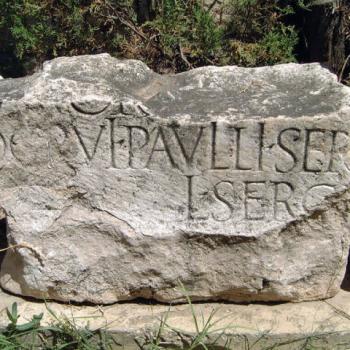Messiah and Worship
by larryhurtado
In Tom Wright’s new opus on Paul, there is a section headed “Jesus as Risen and Enthroned Son of God” (pp. 690-709), where he offers a proposal for how Jesus came to be regarded as in some sense “divine” so quickly after his execution. To cite his own words: “. . . the resurrection, demonstrating the truth of Jesus’ pre-crucifixion messianic claim, joined up with the expectation of YHWH’s return on the one hand, and the presence of the spirit of Jesus on the other to generate a fresh reading of ‘messianic’ texts [in the OT] which enabled a full christological awareness to dawn on the disciples” (692).”
In this discussion, he accuses me (and Carey Newman too) of making “far too little of the resurrection itself, collapsing it in effect into the concept of ‘glorification’, and supposing that the early Christian awareness of the latter came through visions and revelations” (693). But, he continues, “without the theme of YHWH’s return on the one hand, and the Messiahship of Jesus on the other, demonstrated by the resurrection, they would not have generated that early christology which we find already in Paul” (693).
In response, my first comment is to reiterate (from an earlier posting) the point that, in fact, it is difficult to find in Paul’s letters any explicit reference to Jesus as “the personal, embodied return of YHWH.” One can see something like this, perhaps, in Mark 1:1-3, as argued, e.g., by Joel Marcus, The Way of the Lord: Christological Exegesis of the Old Testament in the Gospel of Mark (Louisville: Westminster/John Knox Press, 1992). But Wright doesn’t actually identify Pauline texts where this idea is evident, which raises a question about just how crucial/central it was in the very earliest moments of christological reflection.
My second comment is that there is no disagreement between us over the importance of the conviction that Jesus had been raised from death, and specifically that this likely served as divine vindication of Jesus and the basis of the messianic claim of earliest believers. Wright’s project seems to be to develop a coherent representation of Paul’s theology. But my work has been directed mainly to the historical question of how it was that Jesus (even a messianic Jesus) came to be treated as “divine” and came to be included so programmatically in the devotional/worship practice of early Christian circles. “Messiah” doesn’t get us there. To put it concisely, I don’t see that the conviction that Jesus is Messiah could readily have served as a sufficient basis for the radical “mutation” in devotional practice that I’ve repeatedly pointed to (and itemized its specifics) over some 25 years now.
So, if a “return of YHWH” isn’t evident in Paul (our earliest evidence) as a central factor, and if Messiah isn’t a sufficient category, then how to account for the remarkable “dyadic” devotional practice in question? My own proposal has been that earliest believers treated the risen/exalted Jesus as they did only because they felt required to do so by God. Note that the typical way that reverence of Jesus is justified in various NT texts is to invoke God’s action of exalting him and requiring that he be reverenced: E.g., Philippians 2:9-11; 1 Cor 15:20-28; Hebrews 1:1-4; Acts 2:36; John 5:22-23, et alia).
How then would the conviction have been formed that God had done such an astonishing thing, and now required this novel development in devotional practice? Well, my own proposal is that this conviction was formed through an interaction of powerful “revelatory” experiences (e.g., visions of Jesus in heavenly glory, etc.), prophetic oracles (declaring his exaltation), and intensive and creative interpretation of certain biblical texts (e.g., Isaiah 45:22-23; Psalm 110:1) (see, e.g., my discussion of the “Forces and Factors” in Lord Jesus Christ, 27-78). But, whatever the means/process, the key point is that earliest believers seem to have come quickly to the conviction that Jesus had been exalted to a unique heavenly status, had been given to share in the divine name and glory, and must now be reverenced in obedience to God.
In short, we have to reckon with two distinguishable convictions: Jesus as Messiah and Jesus as rightful recipient of cultic devotion. Both erupted early, perhaps simultaneously. But resurrection, by itself, didn’t suffice for the latter conviction or the devotional practice in question. For that, a “glorification” of Jesus seems to me to have been necessary, a glorification understood as by God and requiring that Jesus be reverenced.
So, given that my own work was focused on trying to examine the eruption of the dyadic devotional pattern reflected already in Paul’s letters, I hope that it’s clear why I’ve underscored the “glorification” of Jesus and not simply (so to speak) his resurrection. The two were obviously linked for earliest believers, but we should avoid collapsing either into the other.














